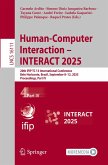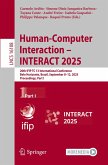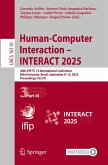Radars, historically used in fields such as surveillance, aviation, and ground imaging, can provide new application opportunities in interactive computer systems. Their specific signal representations obscure human identity, making them well-suited for integration into privacy-oriented applications in our everyday lives.
This book explores how radar enables robust, non-contact sensing for the detection of human presence, implementation of gesture-based interaction, and recognition of user intent without the need of physical contact. With scientific and technical contributions from experts in radar engineering, signal processing, human-computer interaction, computational modelling, and machine learning, the book presents signal processing techniques and tools, surveys publicly available datasets, and highlights novel applications integrating radar sensing.
Radar-Based Human Computer Interaction grounds this emerging interdisciplinary field, addressing researchers and practitioners interested in building the next generation of robust, adaptive, and privacy-preserving user interfaces through radar integration.
This book explores how radar enables robust, non-contact sensing for the detection of human presence, implementation of gesture-based interaction, and recognition of user intent without the need of physical contact. With scientific and technical contributions from experts in radar engineering, signal processing, human-computer interaction, computational modelling, and machine learning, the book presents signal processing techniques and tools, surveys publicly available datasets, and highlights novel applications integrating radar sensing.
Radar-Based Human Computer Interaction grounds this emerging interdisciplinary field, addressing researchers and practitioners interested in building the next generation of robust, adaptive, and privacy-preserving user interfaces through radar integration.








